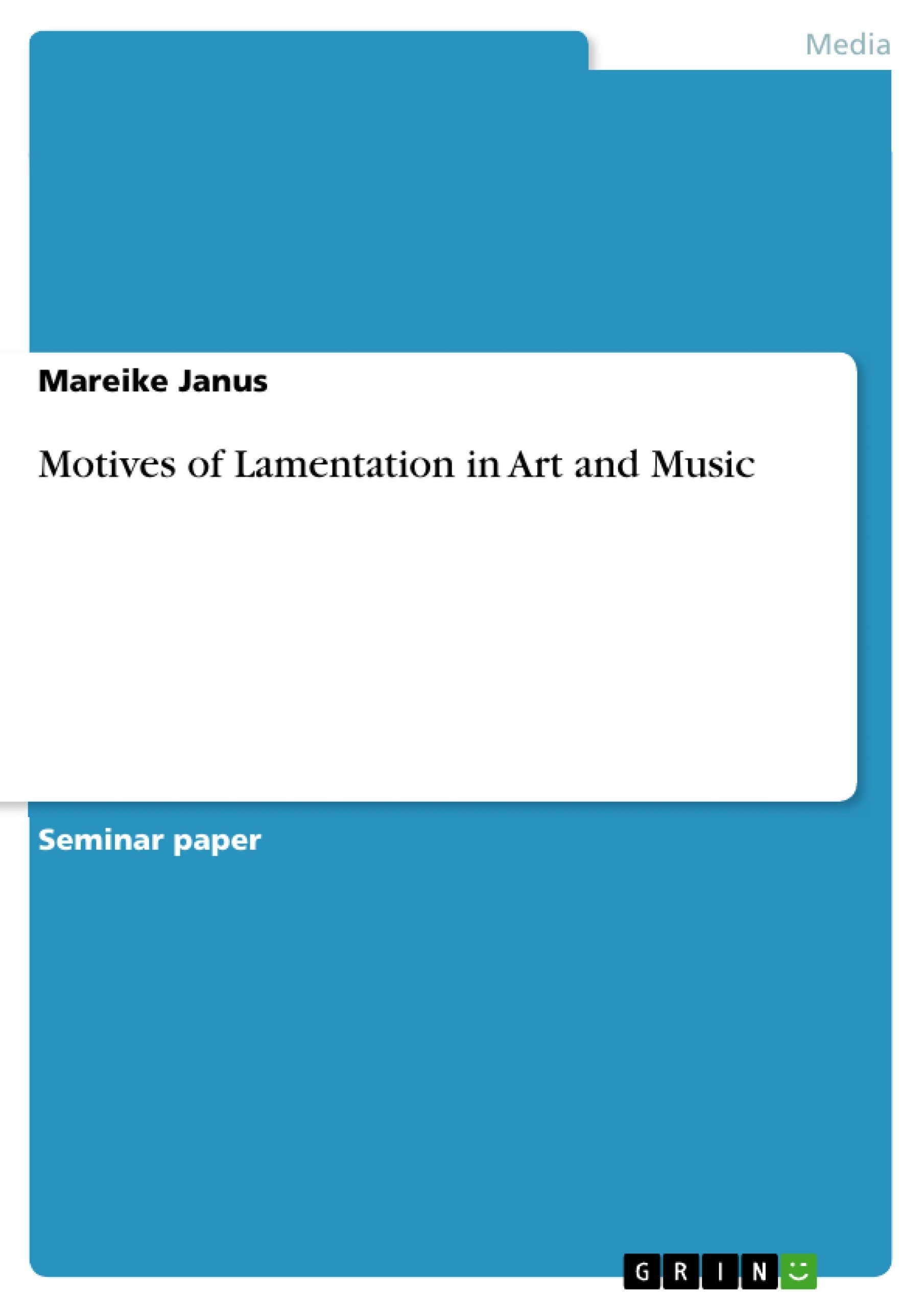In this essay, it will be tried to examine how lamentation in art and music is handled. The aim
will be to find out by which means lamentation is presented to the spectator and which kinds
of stereotypes are used in order to clarify the depiction of grief. First, it will be tried to explain
what the topic of lamentation is generally about, secondly, the case studies in which different
kinds of tragedies that include lamentations will follow. In the music section, it is necessary to
shortly summarize the plots of the analysed works to understand the full impact of the lament.
First, the worldly tragic love stories in no specific order will be the focus of investigation,
before the passion of Christ shall be examined. In the art section, scenes from the stories from
the preceding part of the work will be looked at, so that there is no need of retelling the plots. The terms lamentation and lament derives from the Latin word lamentum1 and can be equated
with expressions such as to mourn, to grieve, to wail, to moan, to weep and to cry. The term
lamentation is closely linked with the Italian term lamento that stands for a piece of music in
which somebody expresses his grief over something, mainly over another person’s death. The
term lamentation when referring to music means in the majority of cases “a vocal piece based
on a mournful text, often built over a descending tetrachord ostinato and common in cantatas
and operas of the Baroque period. Since the late 17th century also instrumental pieces with
wailing nature were sometimes named lamento, especially works by J. J. Frohberger and J. S.
Bach.2 Lamentation in art is represented just as good as in music: Since the medieval and
renaissance times one of the most often depicted topics is the “Lamentation over the Dead
Christ”. Painters, sculptors and other artist grew never tired of illustrating Christ and his
mourners, because of the importance of the incident of his death for the Christian community.
But not only Christians were depicted in the state of lamenting by the western artists, whose
paintings will be discussed later, mythological topics of mourning can be found as well. [...]
1 Brockhaus– Enzyklopädie in 24 Bänden, (Mannheim, 181987), XIII, p. 21
2 Ibid.
Table of Contents
- Introduction
- General Thoughts about Lamentation
- Case Studies
- Music
- Acis and Galatea by Georg Friederich Händel
- Dido and Aeneas by Henry Purcell
- Venus and Adonis by John Blow
- L'Orfeo by Claudio Monteverdi
- Lamento d'Ariana by Claudio Monteverdi
- Johannes passion by Johann Sebastian Bach
- Art
- Lamentation over the dead Christ
- Lamentation in Tragic Love Stories
- Music
- Conclusion
Objectives and Key Themes
This essay investigates how lamentation is presented in art and music. Its goal is to understand the means by which lamentation is portrayed to the spectator and the stereotypes employed to depict grief. The essay examines the general concept of lamentation and then analyzes specific case studies, exploring different kinds of tragedies that feature lamentations.
- The nature and expression of lamentation in art and music
- The role of stereotypes in depicting grief
- The transformation of individual lament into public spectacle
- The concept of catharsis and its connection to lamentation
- The use of music and visual art to depict and evoke emotions
Chapter Summaries
- Introduction: This chapter introduces the essay's aims, scope, and methodology. It explains the focus on lamentation in art and music, particularly focusing on how grief is depicted and the stereotypes used.
- General Thoughts about Lamentation: This chapter delves into the concept of lamentation, exploring its meaning, expressions, and connections to mourning, grief, and weeping. It examines the history of the term, its musical and artistic manifestations, and the reasons behind its persistent appeal in artistic expression.
- Case Studies - Music: This section explores specific musical examples of lamentation, including works such as "Acis and Galatea" by Georg Friedrich Händel, "Dido and Aeneas" by Henry Purcell, and "L'Orfeo" by Claudio Monteverdi. The chapter analyzes the plots and musical elements that contribute to the portrayal of grief and lament in these works.
- Case Studies - Art: This section examines examples of lamentation in visual art, specifically focusing on scenes from the tragic love stories previously discussed in the music section and on the recurring theme of the "Lamentation over the Dead Christ" in Western art.
Keywords
Key terms and concepts explored in this essay include lamentation, lament, mourning, grief, weeping, catharsis, stereotypes, art, music, Baroque, pastoral, tragedy, love, death, and religious imagery.
- Quote paper
- Mareike Janus (Author), 2005, Motives of Lamentation in Art and Music, Munich, GRIN Verlag, https://www.grin.com/document/35230



